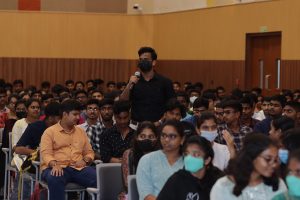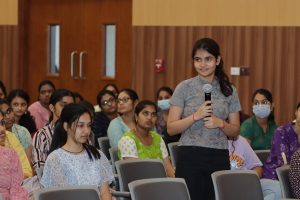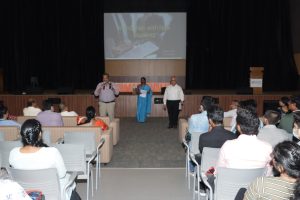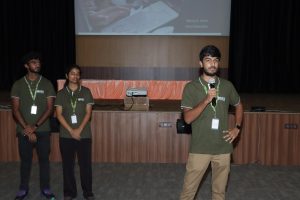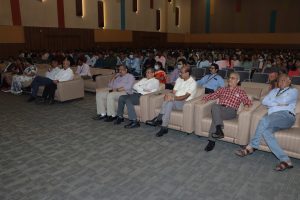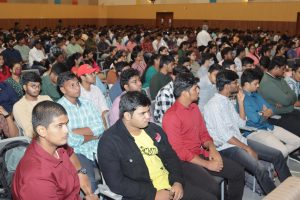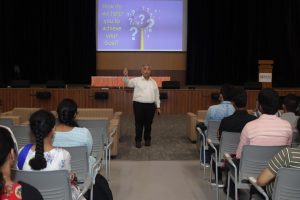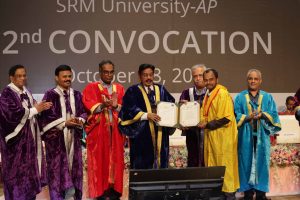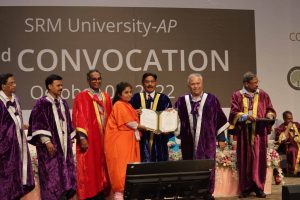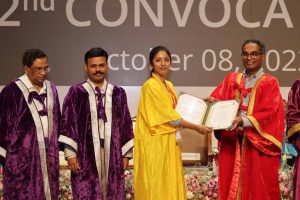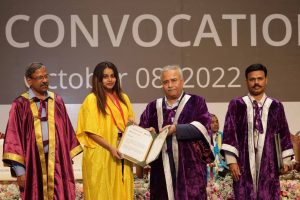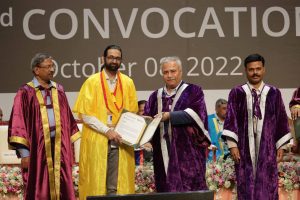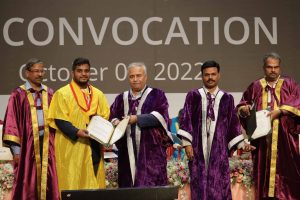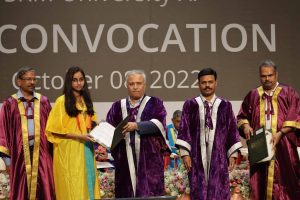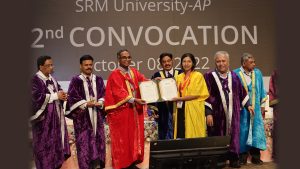SRM-AP All News
ALL News
- A champion in the making! October 17, 2022
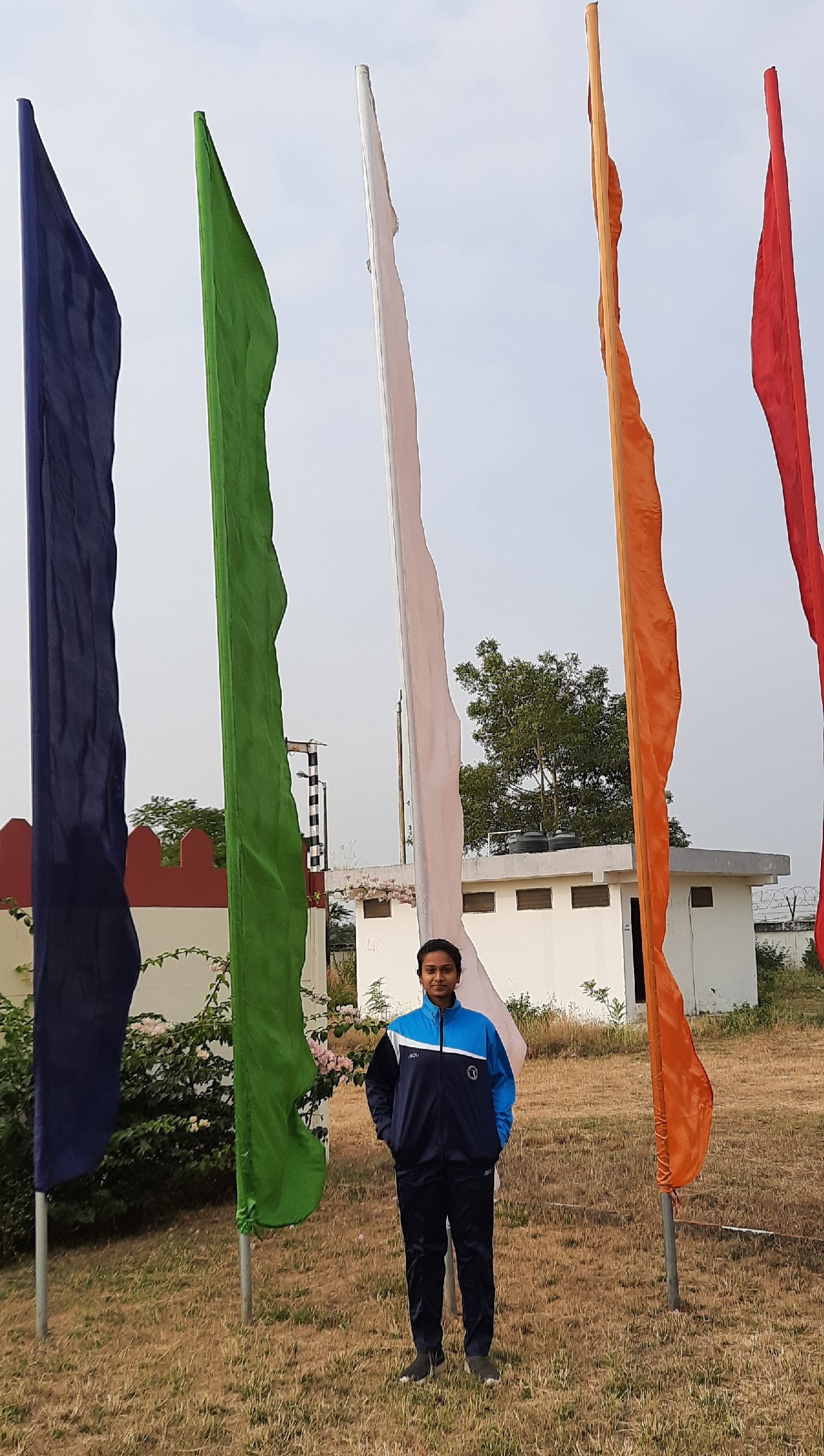
Mastering martial arts is not an easy feat as it demands an exorbitant amount of effort from our physical as well as mental capability. Truly excelling in a martial art form can only be achieved through the manifestation of hardwork, perseverance and unwavering willpower. The Department of Computer Science and Engineering is proud to announce that Ms Bala Ramya Sri Yerramreddy has been selected for the Wushu Championship at the 36th National Games, 2022.
Ms Bala Ramya had previously secured gold at both District and State Level Wushu competitions. Through her journey, she has exhibited strong willpower and dedication to reach these heights. She encourages students to pursue any field of sports or martial arts to attain a peaceful mental constitution as well as physical well-being. Martial arts also equips one with self-defence techniques against physical conflict.
Wushu, an ancient form of hard and soft Chinese martial arts, trains students with superior combat skills for self-defence and promotes sound mental and physical health. One is truly robust only with a healthy balance between well-tuned mind and body.
Her journey to the National Games 2022 representing the state of Andhra Pradesh is awe inspiring and an accomplishment of incredible pride.
Continue reading → - Paving the pathway for higher studies abroad October 14, 2022
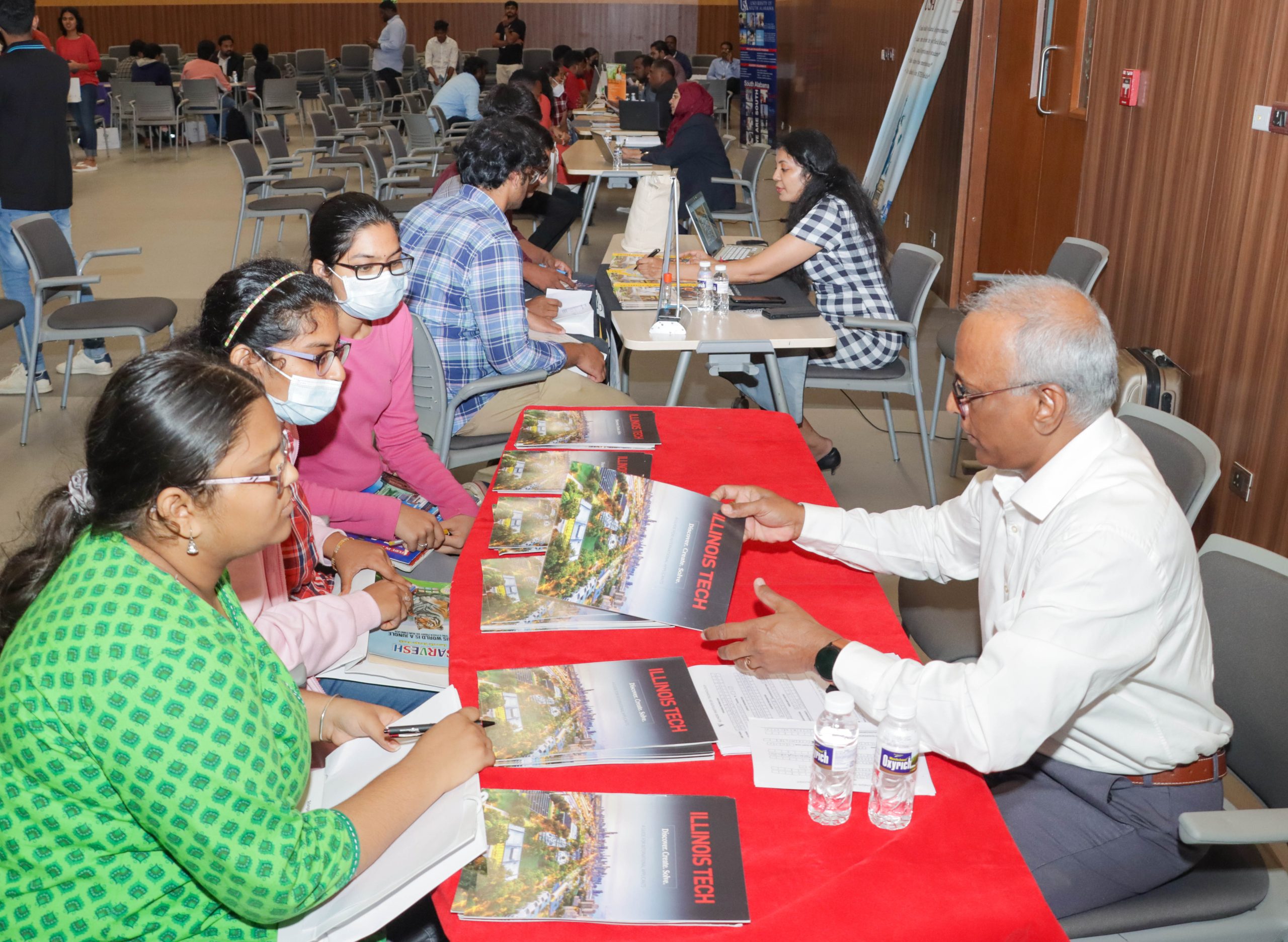
The Directorate of International Relations and Higher Studies organised international education fairs on October 12 and 13, 2022, to introduce students to the vast opportunities of abroad learning at top-notch universities. Global Education Fair 2k22, conducted in collaboration with IVY Overseas, featured premier universities across the UK, the USA, Canada, and Australia, and Overseas Education Fair 2k22, partnering with AECC Global, acquainted students with the leading universities in the UK and the US.
An extensive array of universities, including the James Madison University, University of South Alabama, University of Hartford, Manhattan College, etc., participated in the education fairs and notified students of the numerous programmes available across the disciplines such as engineering, sciences, arts, and management.
Education fairs are enriching opportunities for students to connect with the right spokespeople and gather a fair idea about the various prospects of abroad studies. Having a broad picture of the opportunities available will make the preparatory process easier for students. “The education fair has been extremely helpful to get a detailed overview of the pre-requisites of various universities and manoeuvre my preparation accordingly”, commented Kavya Sree, a Computer Science Engineering student.
SRM University-AP maintains a consistent interface with education abroad experts to assist enrolling students in prestigious overseas universities. The university boasts of its enormous list of students who have made it to high-ranking universities with exciting scholarship offers. “I have already been associated with the university and have no qualms about the calibre of the students. An opportunity to associate with SRM AP is indeed rewarding,” remarked Swapna Parsa, the South Indian Programme Manager for the QS World Ranking universities.
The Directorate of International Relations and Higher Studies spares no effort in providing the students with the right opportunities. The office caters to the requirements of all aspiring students and gives them the right guidance at every step of their preparatory process. Education fairs, awareness sessions, training programmes and coaching for IELTS, TOEFL, etc., are a few of the events organised by the directorate for the students.
Continue reading → - Pitch 101: Incubating innovatory startup solutions October 12, 2022
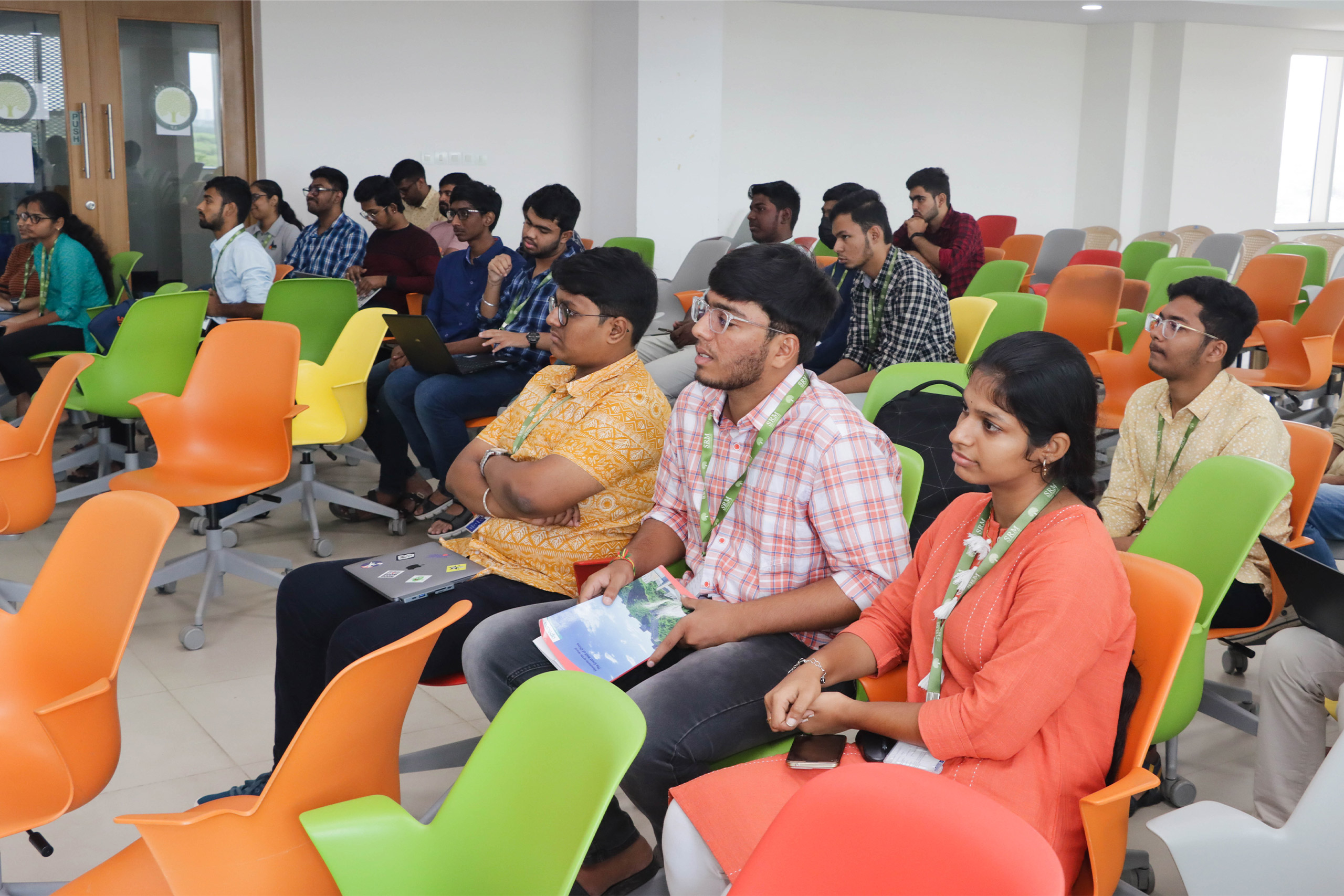
The Entrepreneurial Innovation Lab (ENNOVAB) at SRM University-AP has been the vanguard of student entrepreneurship and innovation. They have been organising inspiring sessions like Enrio, Ennote, Pitch 101, etc, to promote students in their entrepreneurial ventures.
In the recent session of Pitch 101, brought forth on October 12, 2022, students, and faculty of SRM University-AP came together to share their ideas and thoughts on launching revolutionary startups. The event was conceived to invite interesting startup ideas across various technical and non-technical domains, such as Fintech, IoT, Telecom and Media, Banking, Insurance, etc. Excellent ideas were rewarded with exciting prizes.
“Entrepreneurship is a culture, and we are here to support your dreams and ideas”, affirmed Prof B V Babu, Dean – School of Engineering and Sciences, inaugurating the session. Associate Director – Entrepreneurship Mr Udayan Bakshi encouraged students to grow from being job seekers to job providers. Associate Dean-in-Charge (Engineering) – School of Engineering and Sciences Prof T Ragunathan, and Assistant Professor Dr Dinesh Reddy were also present on the occasion.
Pitch 101 was introduced to instigate ennovab sessions that may serve as a one-stop solution to learn and experience ideas and plans and help know the specifics of entrepreneurship and building a startup.
Continue reading → - Tunnel Field Effect Transistor Design and Analysis for Biosensing Applications October 11, 2022

The Department of Electronics and Communication Engineering is glad to announce that Mr Garikapati Anith Chowdary, a BTech passed-out student has published a paper in collaboration with Assistant Professor Dr M Durga Prakash. The paper titled Tunnel Field Effect Transistor Design and Analysis for Biosensing Applications was published in the Q2 journal Silicon having an Impact Factor 2.941.
The physical modelling of the tunnel field effect transistor (TFET) is done in this study. The Silvaco TCAD tool is used to design and simulate the TFET structure. The FET device has attracted a lot of attention as the ideal tool for creating biosensors because of its appealing properties such as ultra-sensitivity, selectivity, low cost, and real-time detection capabilities in a sensing point of view.
These devices have a lot of potential as a platform for detecting biomolecules. Short channel effects, specificity, and nano-cavity filling have all been improved in FET-based biosensors. FET-based biosensors are appropriate for label-free applications. Random dopant variations and a thermal budget are seen during the construction of a JLFET. To overcome this problem, the charge-plasma-based concept was established in FETs in this study.
Different metallurgical functions for electrodes were employed in this biosensor to behave as a p-type source and n-type drain. To alleviate the short channel effects, a dual material gate work function for the gate electrode was devised, as well as a double gate architecture. Biomolecules can be neutral or charge-based, and both types of biomolecules can be identified using a proof-of-concept FET-based biosensor. Changes in the drain current (Id) of the device were achieved by varying dielectric values and charges in the cavity region with variable cavity lengths.
Continue reading → - New student orientation: Interaction with Vice-Chancellor October 10, 2022
Transition from an admitted student to a committed student ready to succeed!
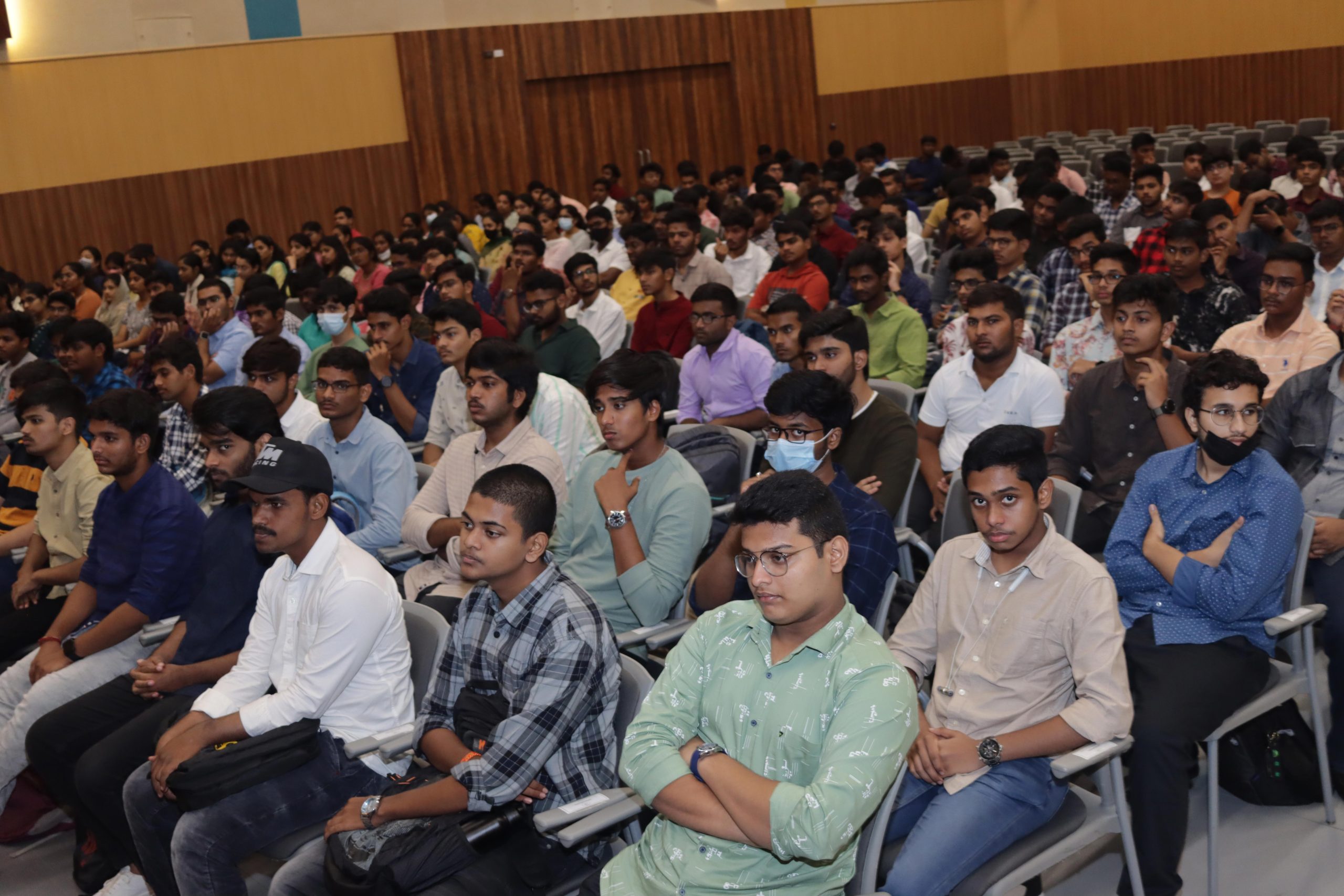
SRM University-AP welcomed students to campus on Monday, October 10, 2022, in an event that commenced at the APJ Abdul Kalam Auditorium. The interactive session with Vice-Chancellor Prof Manoj K Arora aimed for the smooth transition of incoming students to university life.
Students shared their goals and aspirations about the future on the occasion. “I want to be a rocket scientist who’s also a musician”, said Dhruv, a first year Mechanical engineering student. Vinisha, a student from BSc Integrative Biology expressed her dream of becoming a molecular biologist and winning Nobel Prize in future. Several other students also talked enthusiastically about their career goals such as becoming an IAS officer, game developer, artist, software engineer etc. Prof Arora encouraged students to work towards their goals and elucidated how SRM AP can guide them in achieving those lofty goals.
Registrar Dr R Premkumar, Chief Finance and Accounts Officer (CFAO) Mrs Suma N, Director – ITKM Dr K Mohan, Director – Communications Mr Pankaj Belwariar, Director – Sports Dr Vijay Kumar Upadhyay, Director – Student Affairs Mr Anil Kumar Nigam, Associate Director – International Relations and Higher Studies Dr Naga Swetha Pasupuleti, Associate Director – Entrepreneurship Mr Udayan Bakshi, Assistant Director – Student Affairs Ms Revathi Balakrishnan, Dean – Faculty Development Prof Sudhindra Nath Panda, Dean – School of Engineering and Sciences Prof B V Babu, Dean – School of Liberal Arts and Social Sciences Prof Bandi Kamaiah, Dean – Academic Affairs Dr Vinayak Kalluri, Associate Dean-in-Charge (Engineering) – School of Engineering and Sciences Prof T Ragunathan, Medical Officer Dr Ch Lakshmi Rajyam, student counsellors, student council representatives and other members of university executive leadership addressed the students.
Continue reading → - 2nd Convocation ceremony: Proudly honouring the graduates of 2022 October 10, 2022
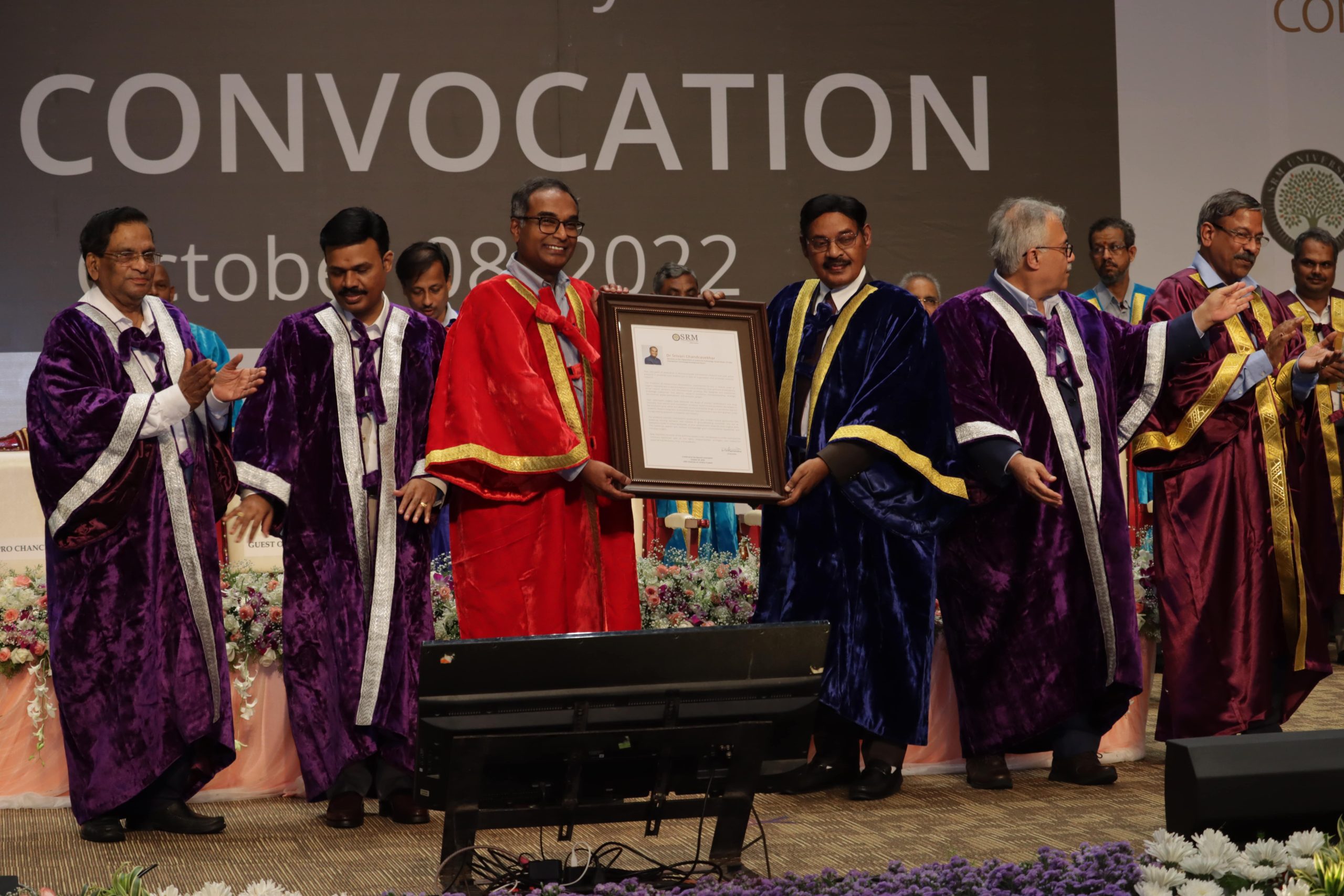 SRM University- AP conducted its 2nd convocation ceremony for the Class of 2022 on Saturday, October 08, 2022, at 3 pm. A total of 1149 students were awarded their graduate degrees at the glorious event held at the APJ Abdul Kalam Auditorium. “As you look forward to the future, I wish you taking action on the key technical, social, and environmental issues that our world is facing today,” said the chief guest of the day, Dr K Radhakrishnan, former ISRO Chairman, in his address.
SRM University- AP conducted its 2nd convocation ceremony for the Class of 2022 on Saturday, October 08, 2022, at 3 pm. A total of 1149 students were awarded their graduate degrees at the glorious event held at the APJ Abdul Kalam Auditorium. “As you look forward to the future, I wish you taking action on the key technical, social, and environmental issues that our world is facing today,” said the chief guest of the day, Dr K Radhakrishnan, former ISRO Chairman, in his address.The ceremony commenced with the welcome address and annual report by Vice-Chancellor Prof Manoj K Arora. “In our objective of being a globally connected, nationally relevant, and regionally transformative university, we are on the path of excellence in knowledge creation and dissemination,” commended him while highlighting the university’s performance and achievements in the academic milieu.
The event continued with the convocation address of Founder Chancellor Dr T R Paarivendhar and Pro-Chancellor, Dr P Satyanarayanan. They enunciated how SRM sets out on its journey with an unflinching vision to grow into a trailblazer in higher education, offering learning par excellence and keeping in line with global academic standards.
“We have always envisioned being a changemaker in the areas of research, placement, entrepreneurship, and higher studies, and we are immensely proud of the profuse accomplishments of our students in these fields, be it the inspiring research endeavours, enviable placement offers, innovative startup plans and exciting opportunities for higher learning,” said Dr P Satyanarayanan.
Pro Vice-chancellor of SRM AP, Prof D Narayana Rao, read out the Citation and Chancellor, Dr T R Paarivendhar conferred the honorary doctorate on Dr S Chandrasekhar, Chairperson, TDB, and Secretary, DST. In his acceptance speech, Dr S Chandrasekhar congratulated the graduands and talked about his vision of a sustainable planet where India becomes an innovation-driven country in the next 20 years. He further called upon the girl students of SRM AP to be the next generation leaders of tomorrow.
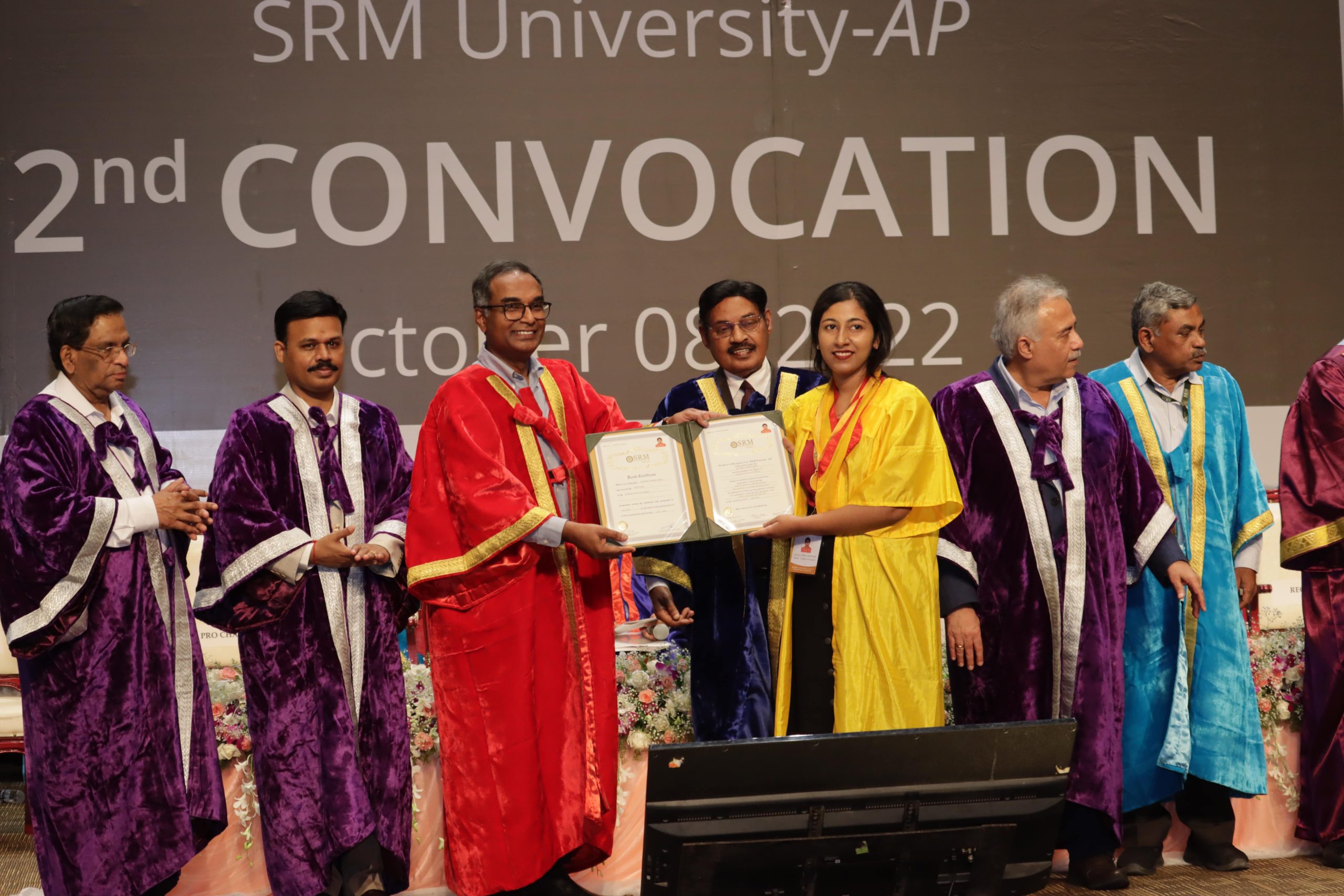 The ceremony proceeded to hand the degrees of merit to the deserving students. Over the years, SRM University- AP has carved a niche for itself in the realm of higher education. The learning destination has achieved numerous milestones for its phenomenal academic performance and purpose-driven endeavours in the Indian educational scenario. SRM AP has earned an enviable reputation of being one of the finest emerging universities in the country within a short span of time. “The university campus has become a breeding ground for excellence and is becoming a revolution in the academic landscape of the country,” remarked the students when asked about their feelings after graduating from SRM University- AP.
The ceremony proceeded to hand the degrees of merit to the deserving students. Over the years, SRM University- AP has carved a niche for itself in the realm of higher education. The learning destination has achieved numerous milestones for its phenomenal academic performance and purpose-driven endeavours in the Indian educational scenario. SRM AP has earned an enviable reputation of being one of the finest emerging universities in the country within a short span of time. “The university campus has become a breeding ground for excellence and is becoming a revolution in the academic landscape of the country,” remarked the students when asked about their feelings after graduating from SRM University- AP.Awards, degrees, and medals were presented for BTech, BBA, BA, BSc, MBA and PhD programmes, and the pledge was administered. Members of the Board of Management and Academic Council, Pro Vice-Chancellor Prof D Narayana Rao, Registrar Dr R Premkumar, Former Vice-Chancellor and Advisor of the university Prof V S Rao, Deans, Directors, Heads of the departments, faculty and staff members, alums, parents of graduands were present on the occasion.
The ceremony culminated with the National anthem, and all the graduates dispersed in exuberant joy!
Know More Continue reading → - In-situ Al–5ZrB2 composite foams : Comparable alternative for conventional Al foams October 7, 2022
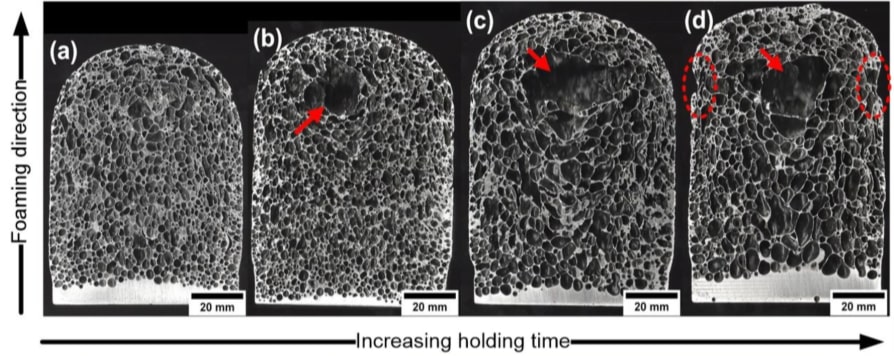
Closed-cell metal foams are crucial to heavy industry machinery as they primarily function as impact-absorbing materials. Stabilizing closed-cell metal foams is a pivotal element in the process of manufacturing closed-cell metal foams. On this note, Prof GS Vinod Kumar from The Department of Mechanical Engineering has published a paper entitled Production, stability, and properties of in-situ Al–5ZrB2 composite foams in the journal Materials Science and Engineering: A with an impact factor of 6.044.
Abstract
Stabilization is an essential requirement to produce closed-cell metal foams. In the melt route of foaming, usually ceramic particles are used as foam stabilizers. For the first time, the present study introduces ZrB2 particles as foam stabilizers. We demonstrate the foaming of in-situ based Al composite containing submicron ZrB2 particles. The effect of foaming temperature and holding time on the structural and mechanical properties of the foams was studied. The composites and foams were characterized using XRD, SEM/EDS, and optical scanning techniques. The mechanical properties of the foams were determined by subjecting the foams to a quasi-static compression test. Submicron ZrB2 particles present in the cell wall and at the gas-solid interface promoted foam stability. All the foams exhibited a good cellular structure with high expansion. Among the foams, the foams prepared at 680 ºC with a holding time of 120 s exhibited the smallest cell size and the best mechanical properties. The structural and mechanical properties of the Al–5ZrB2 foams were found to be comparable to conventional foams.
Novel in-situ ZrB2 particles were produced to form Al-5ZrB2 composites. ZrB2 particles present in the melt tend to stabilize the H2 gas bubbles produced from the decomposition of TiH2. The macrostructure was best observed when foamed at 680 ºC and held for 120 sec. Because of its finer pores ( ̴ 3mm ), excellent compressive strength and energy absorption capacity was exhibited comparable to conventional Al foams.
The paper observes a wide-range of possibilities for the application of in-situ Al–5ZrB2 composite foams to modify bullet proof vests, car body parts, sound and heat proof walls in theatres, naval ship bodies, etc.
Prof Vinod Kumar also discusses the future application of this technique in use of metallic powders as blending agent for effective dispersion of blowing agent in the melt and in the field of compressive and energy absorption studies for Al composite foams.
Continue reading → - SRM University- AP announces Elon Fellowship for budding entrepreneurs October 7, 2022
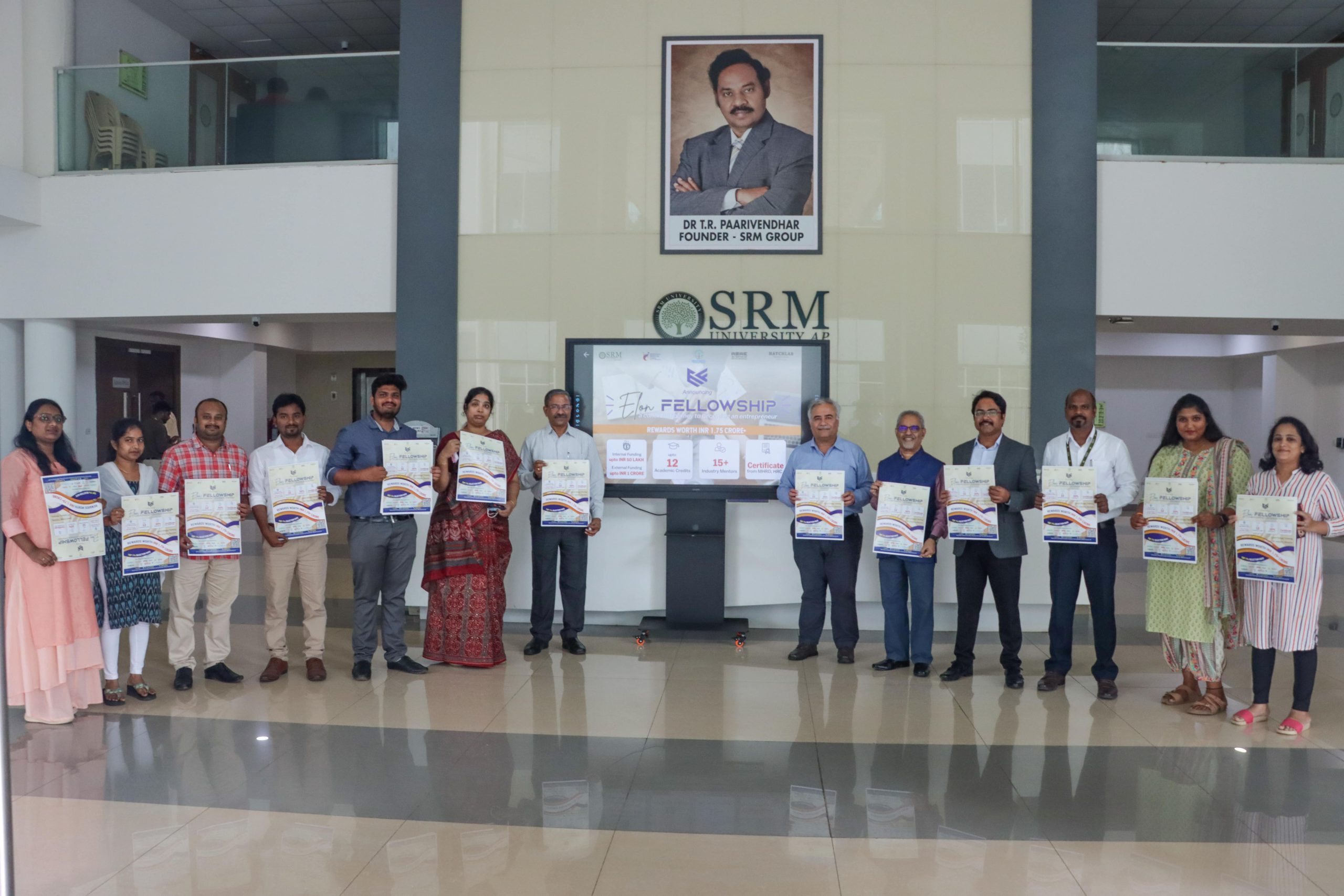
SRM University- AP inaugurated Elon Fellowship on September 30, 2022. It is a novel cohort that aspires to create a startup ecosystem. The Fellowship launched will onboard 60+ venture teams and provide extensive training for four months to facilitate the development of their idea to the prototype stage and beyond. Selected venture groups would receive internal funding up to INR 50 lakhs and external funding upto INR 1 crore for their project development.
The Elon Fellowship poster was launched by the Vice Chancellor of SRM University- AP, Prof Manoj K Arora; Registrar, Dr R Premkumar; and other dignitaries. “The Fellowship opens up new avenues in the domain of entrepreneurship and innovation. It provides students with a well-funded scheme that facilitates fruitful development of their creative ventures”, asserted Prof Arora.
Mr Udayan Bakshi, the Associate Director of Entrepreneurship, SRM AP commented that more than seven portfolio startups of the university have crossed a total revenue of 25 crores annually, making our institution a formidable pioneer in the field of entrepreneurship.
The Andhra Pradesh Innovation Society, Government of Andhra Pradesh, congratulated this innovative scheme. Mr Anil T, the CEO of APIS, extended his support in furthering the cause in promoting young entrepreneurs. The Elon Fellowship grants students a supportive cohort for their journey to entrepreneurship.
Continue reading → - The Saurvi initiative – A new wave for women empowerment October 6, 2022

Upliftment of women is the chief requisite that leads the way to empowerment of a community as well as the nation. The representation of womankind on multitude spheres is imperative for a progressive society to advance into a fair and just future.
Saurvi, the woman leadership and entrepreneurship student community under the Home of Leaders, has become a torch-bearer in creating a novel path for women empowerment by encouraging women into the field of entrepreneurship. The student initiative has recently conducted a bootcamp at Maris Stella Women’s College, Vijayawada AP, to help them create a startup and leadership ecosystem. The interaction between the budding entrepreneurs and students has fostered a positive outlook towards entrepreneurship, leadership and engaging in creative business ventures.
The Saurvi initiative aims at empowering women by cultivating livelihood skills among the women communities and promoting leadership opportunities and business propositions among women from all walks of life. They collaborate with numerous NGOs to generate awareness as well as to nurture impactful women leaders in the field of entrepreneurship.

The initiative has begun to gather momentum and recognition, for their vision, mission and commitment for the cause. Smt KGV Saritha, Superintendent of Police, Andhra Pradesh, offered her words of appreciation for the ingenuity of the initiative to promote women empowerment. The Saurvi enterprise has in view to create 10 women entrepreneurs by the end of 2023, 15 by 2024 and aims to double the number for every consecutive year.
Continue reading → - 15 Lakh investment for Manideep’s Hatchlab venture SPOCSQ Pvt October 6, 2022
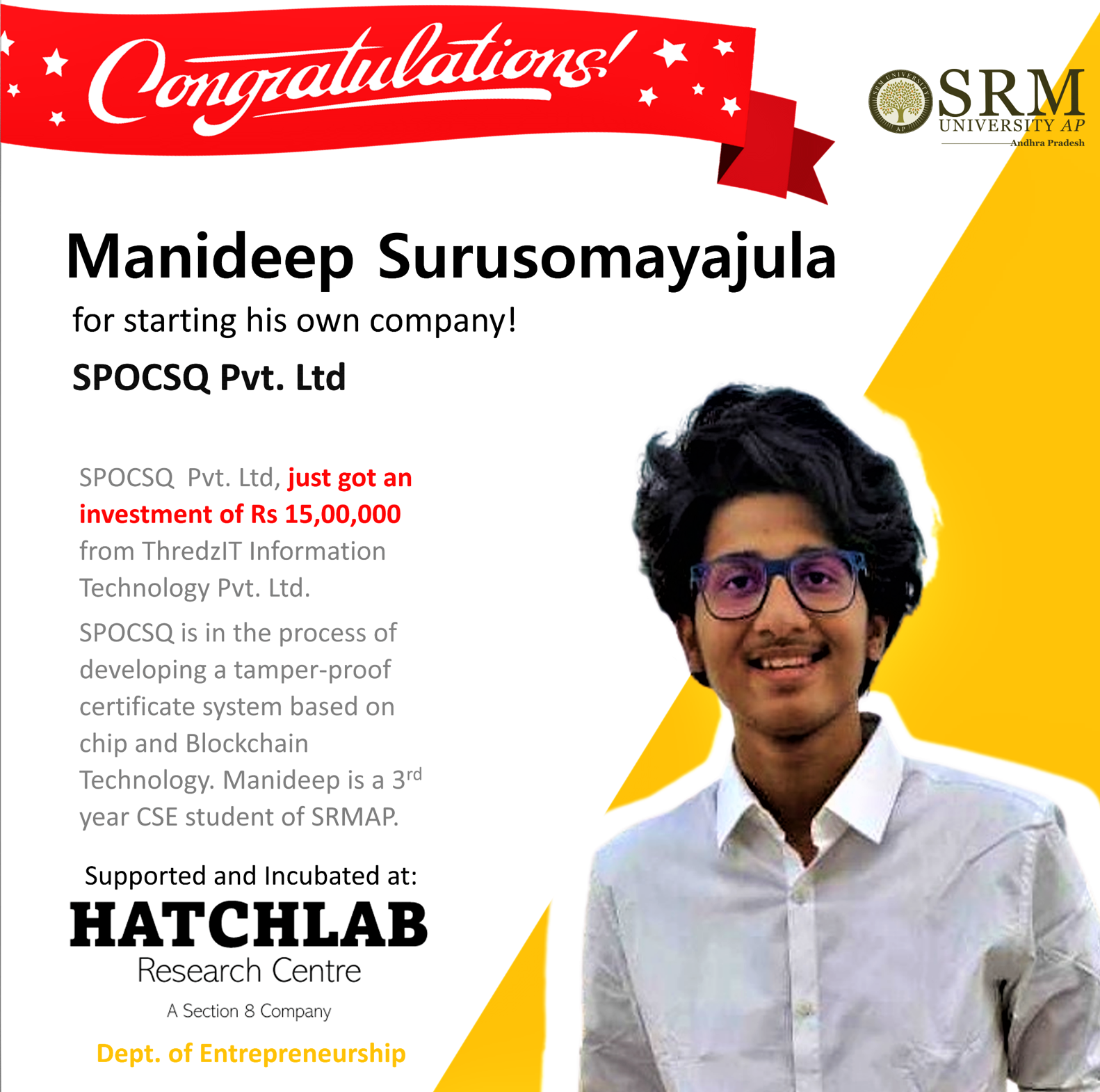 Making an impact on society through revolutionary innovations is not an everyday thing. Manideep Surusomayajula from the Department of Computer Science and Engineering bagged an investment of 15 Lakh for his Hatchlab venture SPOCSQ Pvt. This is the first investment that has been secured by the startup project.
Making an impact on society through revolutionary innovations is not an everyday thing. Manideep Surusomayajula from the Department of Computer Science and Engineering bagged an investment of 15 Lakh for his Hatchlab venture SPOCSQ Pvt. This is the first investment that has been secured by the startup project.His startup deals with chip-based certification processes using Blockchain Technology. SPOCSQ is in the process of developing a tamper-proof certificate system based on chip and blockchain technology.
The investing company ThredzIT Information Technology Pvt. Ltd is willing to invest 20-30 Lakh for the final version of the product. This achievement is a milestone in Manideep’s career as it demonstrates his passion for entrepreneurship and innovation.
Continue reading →


